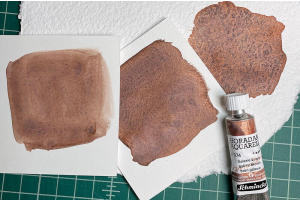We use cookies to make your experience better. To comply with the new e-Privacy directive, we need to ask for your consent to set the cookies. Learn more.
Cheap Joe’s Art Stuff Art Blog
Tips, Tricks, Thoughts, and inspiration from across the art spectrum.
Why You Should Use an Art Easel Stand

Many artists prefer using an easel for painting rather than working with a flat surface. But how do you know if an artist easel is right for you? If you’ve ever found yourself questioning the purpose of an art easel stand, and whether or not you actually need one, you’re in the right place. Today, we’re going to walk you through the history of the well-loved tool so you can understand why it’s been around for so long. We’ll also explain all of the benefits you’d be missing out on if you didn’t add one to your studio. Let’s get started!
What Is An Art Easel?
Let’s begin with a simple definition. An easel is a structure designed to support an artist’s canvas. You’ll also often find them being used for displaying a finished piece of artwork. Today, they’re typically used to allow artists to paint while standing, and they hold the canvas up at an angle of about 20 degrees. There are many different uses for an easel, as the invention dates pretty far back into our world’s history.
Benefits Of Using An Art Easel Stand
Using an easel to prop up a canvas provides many benefits. Having the surface at an angle helps avoid any distortion in the artist’s perspective. This solves the problem of accidentally creating larger figures at the top of the canvas, and smaller ones at the bottom (due to an inaccurate or distorted view). It also makes it easier to step back from your work periodically and view it from a distance. This simply can't be done when your art is laying flat on a table. Easels can also be set up in the best natural light in your studio, or positioned so that they are more easily lit by additional light sources to reduce hand shadows. Ultimately, we find easels often help give the artist confidence that they’re creating proper proportions in their art, so they can work freely and creatively without hesitation.
History Of The Artist Easel
Believe it or not, the history behind art easels is actually pretty complex, dating back to Ancient Egypt. The ancient Egyptian hieroglyph artists pulled their skirts taut around their knees as a sturdy place to write on their tablets. Because much of their writing and art had religious implications, their finished tablets were displayed on elevated platforms now known as the bookstand. Easels are officially recorded as far back as the first century CE when Pliny the Elder (author of the book Natural History) had written about a panel being painted on by an artist. The panel had been propped up on what could have only been one of the first easels. His book was published in AD 77, so it has been assumed that the easel was invented before that date.
From there, more proof of the easel’s existence was discovered in Asia’s history. An art piece from China during the 8th century entitled “A Contemplative Scholar” by artist Wang Wei seems to depict a man using an easel-like structure while studying/reading. In the 12th century, monks began using illuminated easels to ensure their written manuscripts came out as best as they could. Then, in the 13th century, the need for easels rose immensely. Canvas paintings were becoming more popular, and as the renaissance progressed, the easel became a staple tool in the art society.
Easel Sizes And Style Options
Like most tools, the artist easel has grown and evolved over time. In modern times, there are a variety of easel sizes and styles to choose from, depending on your specific needs. In general, there are about 10 different types of easels that artists use, each for a slightly different purpose. Today, you’ll be able to make a selection from the following styles: A-frame/lyre easels, H-frame easels, giant easels, convertible/hybrid easels, single mast easels, tabletop art easels, portable/plein air easels, bench easels/art horses, display easels, and children’s easels.
Each type varies in size, style, and structure, so it all depends on what you’re wanting to use your art easel stand for. For example, many are free-standing (A-frame, H-frame, single mast, etc.) but others are designed to sit on a tabletop. Pricing can vary greatly as well, depending on the quality and type of easel you’re searching for. While some options, like giant easels, can go for a hefty $1800, other more affordable options can work just as well. It all depends on your preference!
Cheap Joe’s Artist Easels
Here at Cheap Joe’s, we proudly offer a large selection of the finest painters easels on the market. Here you’ll find a variety of A-frame easels, aluminum and metal easels, art horses and bench easels, convertible and hybrid easels, display and presentation easels, giant easels, H-frame easels, outdoor and plein air easels, single mast easels, table easels, wood easels, and even workstations with integrated easels. It may seem like a lot of options, and that’s because it is! But that just means you’re guaranteed to find the easel you need, right here at Cheap Joe’s.
We know that choosing the right easel can seem daunting, especially when there are so many sizes and styles available. That’s why our art experts are always available to help out! If you have questions about selecting an artist easel, please don’t hesitate to reach out to us.







